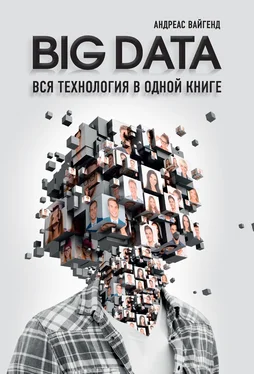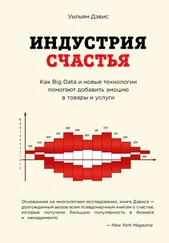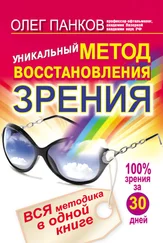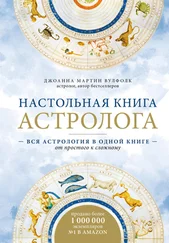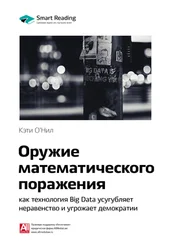Barrett, Lisa Feldman, Batja Mesquita, Kevin N. Ochsner, and James J. Gross, “The Experience of Emotion”, Annual Review of Psychology 58 (January 2007), pp. 373–403, http://www.ncbi.nlm.nih.gov/pmc/articles/PMC1934613.
Ekman, Emotions Revealed, p. 57.
Charlton, Alistair, “Future Supermarket Will Track Shoppers’ Eye Movements”, International Business Times, May 1, 2013, http://www.ibtimes.co.uk/future-supermarket-adverts-track-eye-gaze-sideways-463288.
Kahneman, Daniel, and Jackson Beatty, “Pupil Diameter and Load on Memory”, Science 154, no. 3756 (December 23, 1966), pp. 158–155.
Engbert, Ralf, and Reinhold Kliegl, “Microsaccades Uncover the Orientation of Covert Attention”, Vision Research 43, no. 9 (April 2003), pp. 1035–1045, http://www.sciencedirect.com/science/article/pii/S0042698903000841.
Marks, Paul, “Fitbit for the Mind: Eye-Tracker Watches Your Reading”, New Scientist, February 12, 2014, https://www.newscientist.com/article/mg22129563–700-fitbit-for-the-mind-eye-tracker-watches-your-reading.
Bulling, Andreas, Daniel Roggen, and Gerhard Tröster, “What’s in the Eyes for Context-Awareness?”, IEEE Pervasive Computing 10, no. 2 (April – June 2011), pp. 48–57, https://perceptual.mpi-inf.mpg.de/files/2013/03/bulling11_pcm.pdf.
Беседа автора с Уилки Вонгом – директором по сервисам знаний Tobii Technology, 16 декабря 2015 года.
Najar, Amir Shareghi, Antonija Mitrovic, and Kourosh Neshatian, “Eye Tracking and Studying Examples: How Novices and Advanced Learners Study SQL Examples”, Journal of Computing and Information Technology 23, no. 2 (2015), pp. 171–190, https://www.researchgate.net/publication/279230237_Eye_Tracking_and_Studying_Examples_How _Novices_and_Advanced_Learners_Study_SQL_Examples.NOTES TO CHAPTER XXX 263
Litchfield, Damien, Linden J. Ball, Tim Donovan, David J. Manning, and Trevor Crawford, “Viewing Another Person’s Eye Movements Improves Identification of Pulmonary Nodules in Chest X-Ray Inspection”, Journal of Experimental Psychology Applied 16, no. 3 (September 2010), pp. 251–262, http://www.ncbi.nlm.nih.gov/pubmed/20853985.
Tourassi, Georgia D., Sophie Voisin, Vincent C. Paquit, and Elizabeth Krupinski, “Investigating the Link Between Radiologists’ Gaze, Diagnostic Decision, and Image Content”, Journal of the American Medical Informatics Association 20, no. 6 (November – December 2013), pp. 1067–1075, http://www.ncbi.nlm.nih.gov/pubmed/23788627.
Julian, David P., “Systems and Methods for Counteracting a Perceptual Fading of a Movable Indicator”, US Patent no. 8,937,591, January 20, 2015, https://patents.google.com/patent/US8937591B2/en.
Vidal, Mélodie, Jayson Turner, Andreas Bulling, and Hans Gellersen, “Wearable Eye Tracking for Mental Health Monitoring”, Computer Communications 35 (2012), pp. 1306–1311, http://www.sciencedirect.com/science/article/pii/S0140366411003549.
Di Stasi, Leandro L., Michael B. McCamy, Andres Catena, Stephen L. Macknik, Jose J. Canas, and Susana Martinez-Conde, “Microsaccade and Drift Dynamics Reflect Mental Fatigue”, European Journal of Neuroscience 38, no. 3 (August 2013), pp. 2389–2398, http://www.ncbi.nlm.nih.gov/pubmed/23675850.
Bixler, Robert, and Sidney D’Mello, “Toward Fully Automated Person-Independent Detection of Mind Wandering”, in Dimitrova, Vania, Tsvi Kuflik, and David Chin et al., eds., User Modeling, Adaptation, and Personalization (New York: Springer, 2014), pp. 37–48.
Killingsworth, Matthew A., and Daniel T. Gilbert, “A Wandering Mind Is an Unhappy Mind”, Science 330, no. 6006 (November 12, 2010), p. 932, http://www.sciencemag.org/content/330/6006/932. The app is still available for download at https://www.trackyourhappiness.org.
Kahl, Martin, “Eyeballing the Driver: Eye-Tracking Technology Goes from Vision to Reality”, Automotive World, April 16, 2015, http://www.automotiveworld.com/analysis/eyeballing-driver.
Killingsworth, and Gilbert, “A Wandering Mind Is an Unhappy Mind”, p. 932.
Там же, p. 204.
Sociometric Solutions создали Сэнди Пентман и трое его аспирантов в МТИ – Бен Уобер, Тэми Ким и Дэниел Олгуин. was founded by Sandy Pentland and three of his PhD students at MIT: Ben Waber, Taemie Kim, and Daniel Olguin. Я очень обязан Тэми за кейсы, которыми она поделилась в моем курсе в Калифорнийском университете в Беркли в 2014 году, и горячо рекомендую книгу Бена – People Analytics: How Social Sensing Technology Will Transform Business and What It Tells Us About the Future of Work (Upper Saddle River, NJ: FT Press, 2013).
Этот опыт проводился в два этапа на протяжении четырнадцати недель. На первом этапе собирались данные о существующих взаимоотношениях в команде, на втором проводилось А/В тестирование. This study was conducted in two stages over fourteen weeks, with the first stage used for collecting data about existing team dynamics and the second for the A/B test. Каждая из команд состояла из двадцати сотрудников. Тэми рассказывала, что в командах, совместно проводивших перерывы, время обработки звонка сократилось на 23, а текучка персонала – на 28 процентов. Подготовленный Тэми для моего учебного курса курса в Калифорнийском университете в Беркли доклад о социометрике можно посмотреть на https://www.youtube.com/watch?v=zXmukPb6ijs.
Westen, D., P. S. Blagov, K. Harenski, C. Kilts, and S. Hamann, “Neural Bases of Motivated Reasoning: An fMRI Study of Emotional Constraints on Partisan Political Judgment in the 2004 U. S. Presidential Election”, Journal of Cognitive Neuroscience 18, no. 11 (November 2006), pp. 1947–1958, http://www.ncbi.nlm.nih.gov/pubmed/17069484.
Keuken, Max C., Christa Muller-Axt, and Robert Langner et al., “Brain Networks of Perceptual Decision-Making: An fMRI ALE Meta-Analysis”, Frontiers in Human Neuroscience 8, no. 445 (June 2014), n.p., http://www.ncbi.nlm.nih.gov/pmc/articles/PMC 4063192.
Muehlemann, Thomas, Daniel Haensse, and Martin Wolf, “Wireless Miniaturized Near-Infrared Scans”, Optics Express 16, no. 14 (July 7, 2008), pp. 10323–10330, http:// www.ncbi.nlm.nih.gov/pubmed/18607442; Piper, Sophie K., Arne Krueger, Stefan P. Koch, Jan Mehnert, Christina Habermehl, Jens Steinbrink, Hellmuth Obrig, and Christoph H. Schmitz, “A Wearable Multi-Channel fNIRS System for Brain Imaging in Freely Moving Subjects”, NeuroImage 85, no. 1 (January 15, 2014), pp. 64–71, http://www.science direct.com/science/article/pii/S1053811913007003. The development of NIR technology has been fitful, particularly with comparison to fMRI; see Gary, Joseph P. Culver, John H. Thompson, and David A. Boas, “A Quantitative Comparison of Simultaneous BOLD fMRI and NIRS Recordings During Functional Brain Activation”, NeuroImage 17, no. 2 (October 2002), pp. 719–731, http://www.sciencedirect.com/science/article/pii /S1053811902912279; and Wolf, Martin, Marco Ferrari, and Valentina Quaresima, “Progress of Near-Infrared Spectroscopy and Topography for Brain and Muscle Clinical Applications”, Journal of Biomedical Optics 12, no. 6 (November – December 2007), n.p., http:// biomedicaloptics.spiedigitallibrary.org/article.aspx?articleid=1351966.
Читать дальше
Конец ознакомительного отрывка
Купить книгу
